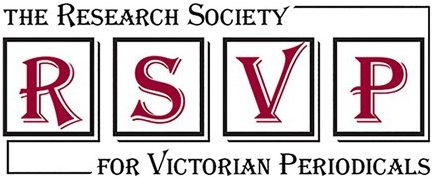Overview
The Freethinking Christians formed in 1799, or possibly in 1801, after having broken off from a Universalist Baptist congregation in Parliament Court Chapel, located in Bishopsgate Street, City of London (Hannah Adams (1755-1831), in her Dictionary of All Religions (1817), gives 1799 as the year in which this society was founded, while William T. Whitley’s, The Baptists of London (1928), dates the congregation’s secession as 1801).
In 1809 (?) they built a church at (Jewin) Crescent, Jewin Street, where between 400-500 ‘members and strangers’ attended the weekly meetings (Hannah Adams, ‘Freethinking Christians’, A Dictionary of All Religions and Religious Denominations, Jewish, Heathen, Mahometan and Christian, Ancient and Modern… (Boston: James Eastburn and Company, and Cummings and Hilliard, 1817), p. 82-3. A Dictionary of all Religions and Religious Denominations <https://books.google.com/books/about/A_Dictionary_of_All_Religions_and_Religi.html?id=yQRaAAAAMAAJ> [accessed 17/06/18].) In 1832, a new meeting house was completed in St John’s Square for the congregation which could seat 300 people, and it served as their place of meeting until 1871 (‘St John’s Church and St John’s Square,’ Survey of London: Volume 46, South and East Clerkenwell, ed. By Philip Temple (London: London County Council, 2008), pp. 115-41. British History Online <http://www.british-history.ac.uk/survey-london/vol46/pp115-141> [accessed 17 June 2018]).
This church produced (at least) two different magazines, the first perhaps as early as January 1811, and the second in 1842 until at least 1844. (The evidence for the earlier magazine comes from the second volume of The Freethinking Christian’s Magazine. See The Freethinking Christians’ Magazine; Intended for the Promotion of Rational Religion and Free Enquiry, No. 13, Vol. 2 (London: printed and published by Charles Mitham, 1812). The Freethinking Christians’ Magazine <https://books.google.co.uk/books?id=wTIEAAAAQAAJ> [accessed 17 June 2018]). The first magazine will not be discussed here as it was a church magazine used primarily as a discussion forum for its members and a vehicle to set out its differences from other established religious doctrines and dogma.
The group based at the Freethinking church produced at least twenty-six issues of their own manuscript magazine, of which only five issues – those dating from August to December 1844 bound into one volume – have survived. The volume itself is 442 pages, and is bound in a hard-board cover with a leather spine and corners, held by a brass clasp. The book housed in the collection of the London Metropolitan Archives once belonged to Thomas Wolstencroft, whose signature appears on the blank page inside the cover. The five issues are preceded by a title page for this fourth volume, and an index of the entire contents was added at the front. Each issue begins with a short transcription of a sermon or quote from the Bible written on the back of the ‘Contents’ page. The magazine is a miscellany that includes essays on church policies and practices along with moralistic pieces, but contributions of original prose fiction and particularly poetry also feature regularly.
When compared to the earlier, print magazine produced by the church, the manuscript magazine is decidedly more ‘literary’, and literature along with the ‘Uses of Books’ are discussed with some zeal. For example, a series entitled ‘Scraps’, and later ‘Our Scrapbook’, includes short transcriptions from a variety of sources under themed headings, all of which were meant to be instructive. Books are reviewed in two of the issues. In addition, a series of articles entitled ‘My Literary Favourites’, featuring Jean-Jacques Rousseau, Dugald Stewart and Charles Lamb, were written by a frequent contributor to the volume known only as ‘V’. But the magazine could also be the site of less serious, more playful discussion of books and literature, as in the article entitled, ‘A Glance at One of the Uses of Books’, which takes the form of a pseudo-medical, half-jesting treatise.
Other regular features in all the issues were letters to the Editor, extracts from personal letters, the ‘Editor’s Present Reply to Questions Sent’, a correspondence column, and articles written in reply to previous pieces. What is evident from these five issues is that the magazines acted as a medium in which to carry out a series of dialogues between the contributors, the Editor, the readers, as well as the church community. This interdiscursivity is foregrounded throughout all of the issues. The church Elder, in his role as magazine Editor, acted as gate-keeper to the magazine as well as moderator. The predominant purpose of the letters to the Editor was to ask for his opinion on, or clarification of, the finer points of various doctrines, or alternatively for the elucidation of religious terms.
This later manuscript magazine appears to have been a platform for which a number of writers, both men and women, of varying experience could improve and hone their skills in writing not only religious and moral essays and poems, but also more ‘literary’, even humorous, contributions for a sympathetic audience, and who hoped, perhaps one day, to earn acclaim for his/her writing.
Name of Club, Society or Group That Produced the Magazine
Freethinking Christians (Church of God, St John’s Square, London)
Date of Existence
1842?-1844?
Dates of Magazine
Vol. 4 (containing No. 22, 4 Aug. 1844; No. 23, 1 Sept. 1844; No. 24, 6 Oct. 1844; No. 25, 3 Nov. 1844; No. 26, 1 Dec. 1844)
Number of Issues
5 (extant)
Manuscript/Published Magazine
Manuscript
Contents and Contributions
Correspondence columns; Essays; Extracts of published works; Fiction/Narratives; Index; Letters to Editor; Poems (original); Poems (republished material); Proverbs; Reviews; Sketches; Tables of Contents; Title pages
Repository
London Metropolitan Archives
Reference
CLC/197/MS02199
